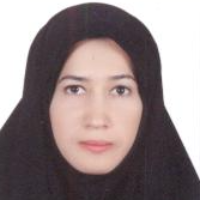Identifying the effects migration of male households in rural wemen (Case Study: Mashhad county)
Author(s):
Article Type:
Research/Original Article (دارای رتبه معتبر)
Abstract:
There is definite or seasonal migration of men individually like other third-world countries in Iran as well as the migration of rural households to the city. The present study seeks to identify the most important positive and negative effects of gender migration of male heads of households from rural areas. The research method is descriptive-analytic, and it is applied-development research. The sample size included 289 women in 22 villages with low sex ratio in Mashhad County. The positive and negative effects of individual male immigration on rural women were investigated using 30 variables using exploratory factor analysis. The most important positive effects of the mens migration were five factors with 68.38 percent of the variance: increased womens decision-making power in the family by 21.2%, increased womens financial independence by 16.2%, increased psychological empowerment by 13.4%, willingness to make income-generating activities with 9% and increasing participation in the economic and social spheres is explained by 8.5% of variance. Furthermore, the most important negative effects of male immigration were the following five factors, with 63.17% of the variance, respectively: breaking the gender division of labor in the family by 19.2%, increasing the dependence of women to others by 13%, reducing the chance of marriage and fertility by 12.5%, problems in managing family affairs with 10% and the entry of minors and elderly people into economic activities with 8.5% of the variance.
Keywords:
Language:
Persian
Published:
Journal of Rural Research, Volume:9 Issue: 1, 2018
Pages:
58 to 71
https://magiran.com/p1835963
سامانه نویسندگان
مقالات دیگری از این نویسنده (گان)
-
Investigating and analyzing the spatial distribution pattern of the covid-19 epidemic in peri-urban areas (Case study: Central part of Mashhad county)
Haneyeh Moayerian, *, Mostafa Amirfakhrian
Journal of Urban Peripheral Development, -
Analysis of households' livelihoods in border villages (Case study: Torbat-e-Jam county)
Farhad Ramezani, *, Hadi Zarghani
Journal of Applied Researches in Geographical Sciences,


